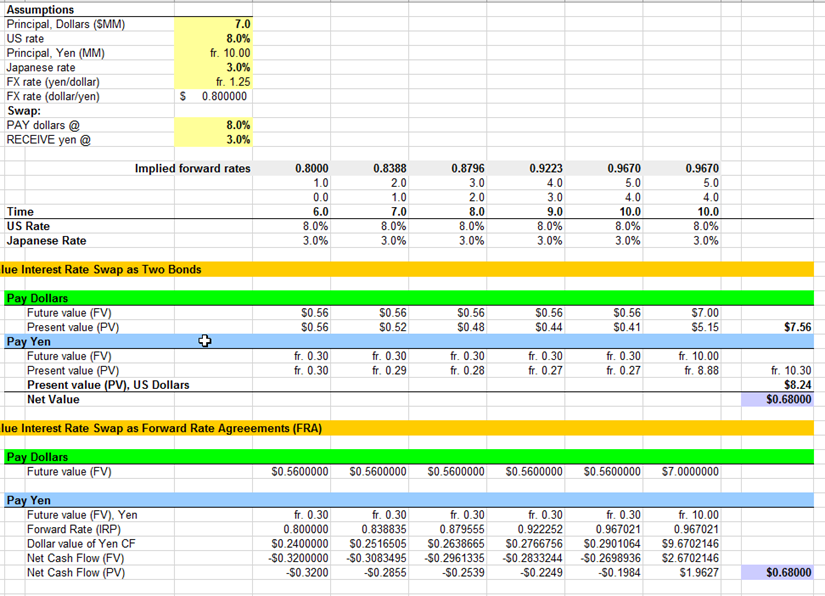gargi.adhikari
Active Member
In reference to R19.P1.T3.FIN_PRODS_HULL_Ch7_Currency_Swap_Valuation
Eg2:-
Currency Swap Valuation -Eg 1 in the prior tab is perfectly good. But I had some questions on the 2nd Example for the Currency Swap Valuation. I see 2 different Net Swap Values for the 2 methodologies - $ 2.71 in the Bond Methodology and $ .6121 in the FRA Method. Also, in The Bond method, the valuation is just for Time = 10...where are the other years..? Why are we not factoring them in..?
Also why are the Time values Row 16 ( F16 to K16 ) = Row 17 ( F17 to K17 ) - 5 ...?
Much gratitude.

Eg2:-
Currency Swap Valuation -Eg 1 in the prior tab is perfectly good. But I had some questions on the 2nd Example for the Currency Swap Valuation. I see 2 different Net Swap Values for the 2 methodologies - $ 2.71 in the Bond Methodology and $ .6121 in the FRA Method. Also, in The Bond method, the valuation is just for Time = 10...where are the other years..? Why are we not factoring them in..?
Also why are the Time values Row 16 ( F16 to K16 ) = Row 17 ( F17 to K17 ) - 5 ...?
Much gratitude.

Attachments
Last edited:


 I probably need to remove this sheet or clean it up. I finally discovered it was my hasty attempt to answer Hull's Question 7.12, which I probably should not have shared to the learning XLS. Here is Hull's question which I was attempting to answer:
I probably need to remove this sheet or clean it up. I finally discovered it was my hasty attempt to answer Hull's Question 7.12, which I probably should not have shared to the learning XLS. Here is Hull's question which I was attempting to answer:
 Will dig back into this one shortly
Will dig back into this one shortly 
